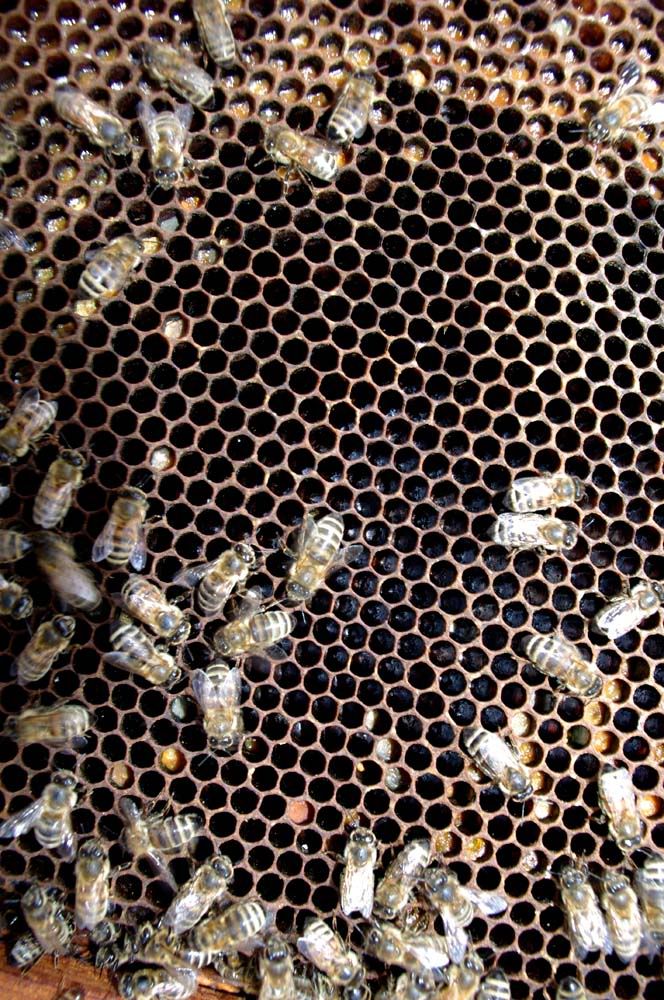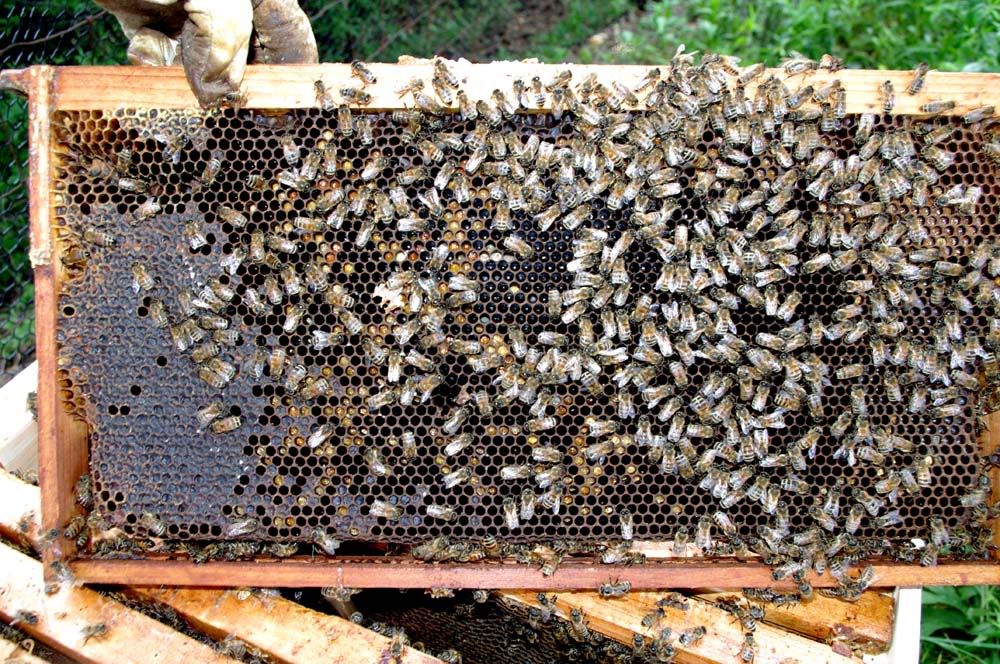I went down there with the plan to do an inspection, swap out some ratty old equipment for new stuff, place a grease patty and hopefully add a honey super.
They'd been a little quiet lately, not much activity visible from outside the hive. A couple thumps on the side would produce a reassuring hum, so I tried not to worry about it too much. On days that I can't get anyone to watch Ava, all I can do is thump 'em!
We've had so much rain this spring. Maybe 10 decent days out of the past 2 months or so. They say not to work your bees after a thunderstorm because they'll be mean, but reflecting on that now, I wish I'd taken my chances. The last inspection I got to do was 6 weeks ago. Far too long to leave them alone.
I knew that they had tons of honey left over from winter, so I didn't worry about feeding them through those long weeks when they weren't able to fly. They missed the dandelions, the apple and peach blossoms, half of the blackberry blossoms and sadly all of the black locust and most other tree flowerings. It finally quit raining long enough for them to hit the nearby tulip poplars. Most of the pollen I found inside looked to be tulip poplar.
 |
| Lots of yellow pollen, lots of stored nectar. Old supercedure cell on the left center. |
I expected there to be a very poor brood build up.
However, I did not expect there to be NO QUEEN. No sign of her anywhere! No tiny eggs, no capped or open larvae. Nothing! No evidence of laying workers either though...
 |
| Lots of empty cells. No brood! |
So, I looked everything over very well. I don't believe there is any scary disease in the hive. I saw just a couple of ants on the lid, no hive beetles, one propolis entombed wax moth... The workers looked pretty good. No K-wing to indicate a heavy mite load, although I'll do a count now too. Being that there is no brood, that should mess up the life cycle of the mites anyway.
She's just gone. I did find a couple empty supercedure cells and two swarm cells that had been there awhile. They superceded last year anyway, but I removed those. These were in the other deep and they were very old (and empty.)
The bottom deep was completely empty and I took advantage of that to remove it and get rid of some very messy and wild comb. The upper deep was packed full of pollen and nectar, the two end frames being completely full of last year's honey and all other frames having varying amounts of old honey all contained in the back third of the frame. When I do get a queen in there, they'll be ready for her.
 |
| Typical of all 10 frames, lots of stored food, no evidence of the queen. |
Since there aren't any laying workers, I am going to give them a couple days and inspect again, just in case they have a virgin queen and she hasn't gotten started yet. If still queenless, I will have to call a lady from my bee association and see if I can buy a queen from her pronto.
Between the rain, and now this, it isn't looking like I'll get to harvest any honey this year. :( I really need a second hive to work with. If I could borrow some brood, I could have them back up and running very soon.
I know this is a late response, but I have pretty much the same scenario with my two hives. I'm a public school teacher in New Jersey, and this is a school project. There were hatched queen cells in the weaker hive; probably a virgin queen not yet laying. What did you end up doing with the situation you describe?
ReplyDeleteHi Stephen, I finally ended up merging this hive with a small swarm that I was able to obtain. I hived them for a week first to see how the swarm's queen was doing and she was laying great, so I combined the two.
ReplyDeleteI had inspected this queenless hive two more times prior and still there was no sign of eggs or brood. I couldn't find a queen, but perhaps I overlooked her. That was the part I couldn't understand. Why there wouldn't have been any laying workers? I don't know if that had to do with the timing of events; perhaps I lost the virgin queen or perhaps she was there long enough to supress the nurse bees with her pheromones who would have otherwise gone into laying? I'm not sure. The nurse bees may have outgrown that phase before it became a problem. My hive was queenless for about a month.
Laying workers would have been a whole other problem to deal with.
If you have a good hive that you can pull a frame of very young eggs from (under 3 days old) you can put that in there and they'll raise a new queen if you're willing to wait. But it's quicker to buy a new queen if you can. If you have a local bee club, they can probably put you in touch with someone who raises queens.
I decided to do the merger instead because the small swarm was way too small to overwinter. This queenless hive had lots of stored pollen and honey. It was mutually beneficial for them both. :) I wrote about the merger here - http://onesunnyacre.blogspot.com/2011/06/merging-two-hives.html
Hope that helps and that you are able to get your hive back in business soon. Good luck!